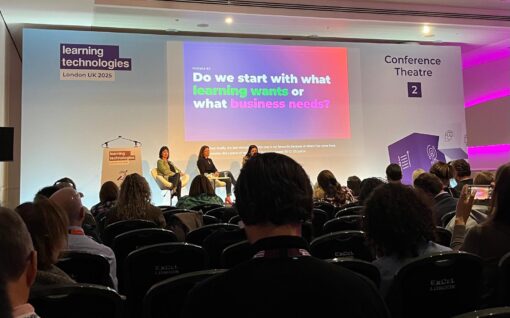How an editorial approach can benefit L&D

Learning to market what the L&D team offers has become an increasingly important part of corporate learning activities. L&D teams are interested in this because marketing is seen as a way of helping build awareness of, and engagement in, L&D initiatives.
There are lots of marketing techniques that can and do benefit L&D teams – creating an L&D brand and running targeted campaigns, for example. However, there is a fundamental problem with the marketing approach. And that is that marketing serves the organisation. It is acting on behalf of the organisation and is traditionally seen as a function that provides leads for sales teams. It tends to sell an organisation/product/service proposition. As the Wikipedia definition of marketing says:
Marketing is defined by the American Marketing Association as “the activity, set of institutions, and processes for creating, communicating, delivering, and exchanging offerings that have value for customers, clients, partners, and society at large”.[11] The term developed from the original meaning which referred literally to going to market with goods for sale. From a sales process engineering perspective, marketing is “a set of processes that are interconnected and interdependent with other functions of a business aimed at achieving customer interest and satisfaction”.
Why have I started a piece looking at the importance of editorial to L&D by looking at marketing? Because the value of taking an editorial approach has to be seen in the context of marketing, which is seen as an important part of engaging employees in learning.
An editorial approach provides a different, and more valuable way, to engage employees around learning. How so?
The word editorial derives from the word ‘editor’, someone who is in charge of and determines the final content of a newspaper, magazine, or multi-author book. In his piece, What is the function of an editor?, BBC media editor Amol Rajan says that editors of newspapers have three loyalties:
- To the truth
- To the reader
- To the integrity and reputation of the newspaper
And it is these loyalties that shape an editorial approach. And it is these loyalties that differ from marketing in that they are NOT focused on selling products and services.
At this point it is worth noting that the marketing function has borrowed massively from editorial as content has become so important in engaging prospects and customers. This has manifested itself in the branch of marketing known as content marketing.
Content marketing aims to create useful content for readers and lots of former journalists work in content marketing roles. But content marketing serves the organisation. It is there to build relationships that will lead to sales.
If we take the loyalties shared by the BBC’s Rajan and looked at them through a learning lens, then they would look like this.
1 The truth
Providing the most accurate information and delivering it in ways that L&D knows are the most effective for learning. Being honest and prepared to challenge the things that don’t work.
2 The employee
Creating resources in service of the employee, not the organisation. That means providing what employees need to do their jobs better in the context of the vision, values and goals of the organisation.
3 The integrity of the organisation
Providing learning and development opportunities for employees that support the integrity of the organisation. Developing a culture that has integrity at its heart.
At a time when fake news and fads pervade all areas of our lives, the focus on truth becomes critically important for L&D teams. This is what builds credibility in the learning function. But, as we see with journalism, you have to be brave to uphold the truth.
Serving employees means having a deep understanding of employees’ needs and challenges in order to understand what resources will help them do their jobs better. The L&D interventions that might be required could fly in the face of how learning has been done historically in the organisation. Again, L&D needs to be brave to challenge the status quo.
Finally, serving employees means staying abreast of their challenges and adapting your activities accordingly. This is where data comes in. L&D teams can use data to understand who is looking at what, what topics are trending, which formats are popular and when people are accessing content – all insights that can help L&D provide a service based on continuous improvement.
These are just some of the areas we will be exploring in our forthcoming event (on 11 November) Learning from editorial – 10 tips for L&D teams. Register here.

